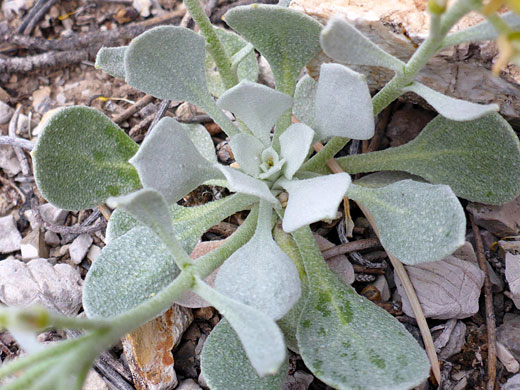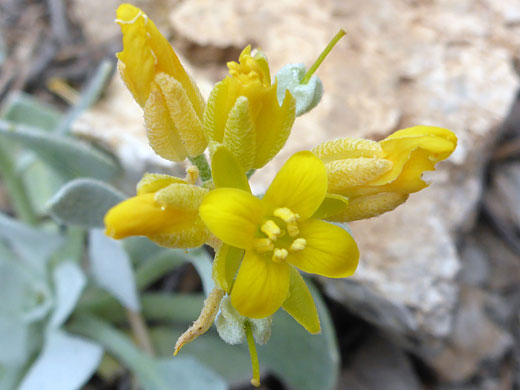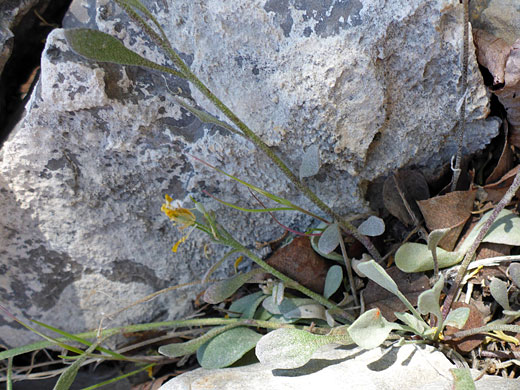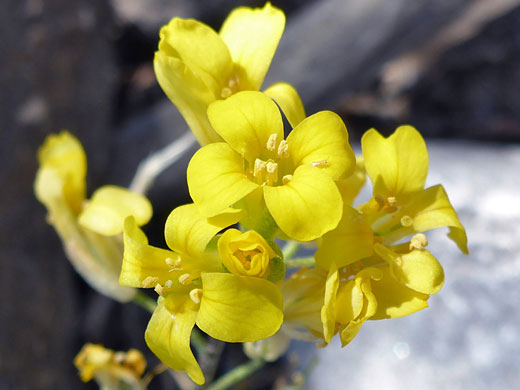Common name:
King bladderpod
Family:
Scientific name:
Physaria kingii
Main flower color:
Range:
Nevada and adjacent states
Height:
Usually up to 8 inches; sometimes more, though stems tend to grow at a low angle
Habitat:
Ridges, hillsides, sagebrush, pinyon-juniper woodland; up to 11,000 feet
Leaves:
Between 1 and 3 inches long, stalked, oblanceolate, spatulate or elliptic
Season:
April to August
Stems, leaves and calyces of physaria kingii are densely covered by branched hairs, divided into between three and seven rays. Stems branch from the base and are usually positioned at an angle or sideways, close to the ground. Leaves grow from the base and at alternate intervals along the stems. Basal leaves have long stalks, tapering abruptly to the blade, which is variously round, oblanceolate or elliptic. Cauline leaves are much smaller, around half an inch long, and the blade is more elliptic, or obovate.
Compact, dense, non-elongated flower clusters form at the end of each stem; flowers have four narrow, lanceolate sepals and four wider, obovate petals of similar length, colored yellow to creamy white, withering to brownish-orange.
There are seven subspecies of physaria kingii (bernardina, cobrensis, diversifolia, kaibabensis, kingii, latifolia, utahensis), differing in such aspects as fruit dimensions, petal color, basal leaf margins and stem angle.
Compact, dense, non-elongated flower clusters form at the end of each stem; flowers have four narrow, lanceolate sepals and four wider, obovate petals of similar length, colored yellow to creamy white, withering to brownish-orange.
There are seven subspecies of physaria kingii (bernardina, cobrensis, diversifolia, kaibabensis, kingii, latifolia, utahensis), differing in such aspects as fruit dimensions, petal color, basal leaf margins and stem angle.
All Contents © Copyright The American Southwest | Comments and Questions | Contribute | Site Map






